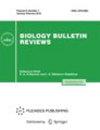[生态演替与空间链线排列之间的相互联系]。
摘要
关于继承理论,有四个方面争议很大。第一个方面涉及“演替”一词在任何层次的生命组织中的广泛用法。第二个方面是关于按时间顺序和按时间顺序的群落演替的相容性。第三个方面涉及“继承”概念的语义。第四方面涉及“演替”与“生态系统演化”概念的相容性。不加区分地使用“继承”一词已经侵蚀了它的原意。演替只适用于生命组织的群落层次,而不是任何层次。演替不仅仅是不同个体发育阶段生命形式的替代,也不仅仅是种群结构或生物物种组成的变化,演替是种群关系系统的优化过程。其他层次的生物变化独立于共生过程而发生。演替只有在一个主观或任意选择的生境框架内考虑时,才给人一种随机时序的印象。后者被视为参考,而忽略了其他邻近生境,这些生境的生物群也经历了不同程度的互补演替变化。最近,越来越多的人讨论了一种强烈的假设,认为演替只包括按时间顺序排列的群落序列,在很长一段时间内发生在同一个栖息地。这种说法是站不住脚的,因为任何演替都不可避免地包含几个栖息地,要么是先后的,要么是同时的。一个生境的生物群存量显然不足以满足持续的随机过程。所有经历演替变化的生境,不是孤立的和功能自给自足的,而是排列在链带中,即由相应生物群系内的地貌、排水、水文、小气候趋势和生物交换决定的标准化时序。因此,演替不仅代表时间顺序,而且代表时间顺序现象。这种概念完全符合灵知学的时间和空间不可分割的原则,时间和空间可以相应地从一个转化为另一个。“演替”一词在字面上和语义上都是指生态系统中环境经验的继承和定型,对给定的生物群系来说是传统的和最佳的,而不是生态系统过渡到一个截然不同的状态。只有在链带的遗积生态系统中才有可能偏离刻板印象,那里的物质周转高度不平衡,从而为生物群提供了实现其进化潜力的机会。一个连系的其他生态系统由于其生态制度的预先决定而排除了这种可能性。在这些生态系统中,演替经常被中断,然后在不同的起点恢复,从而确保生态系统演变的持续减缓,这是一个革命性的、不可逆转的进程,根据定义无法复制。e-mail: mu4@eco.nsc.ru Four aspects related to succession theory are highly disputed. The first aspect concerns broad usage of the term "succession" for any level of life organization. The second aspect concerns the compatibility of chronological and chorological community successions. The third aspect deals with the semantics of the "succession" notion. And the fourth aspect relates to the compatibility of the concepts "succession" and "ecosystem evolution". Indiscriminant use of the term "succession" has been eroding its original meaning. Succession pertains only to the coenotic level of life organization, rather than any level. Succession is not a mere substitution of living forms at different ontogenetic stages, nor merely a change in population structure or biological species composition: succession is an optimization process of a coenotic relations system. Biotic changes at other levels take place independently of coenotic processes. Succession gives an impression of a stochastic chorological sequence only when considered within the frameworks of one subjectively or arbitrary chosen habitat. The latter is regarded as a reference one, while ignoring other neighbouring habitats where biota also undergoes complementary successional changes in different degrees. Recently an importunate postulate urging to believe succession to embrace only chronological community sequences, occurring in one and the same habitat during long time, is being increasingly discussed. This claim is not justified as any succession inevitably embraces several habitats, either successively or simultaneously. The stock of biota in one habitat is evidently not enough for the constant stochastic process. All habitats undergoing successional changes, rather than being isolated and functionally self-sufficient, are arranged in catenas, i.e. standardized chorological sequences determined by geomorphology, drainage, hydrology, microclimatic trends and biotic interchange within the corresponding biome. Therefore succession represents not just a chronological, but rather chrono-chorological phenomenon. Such notion perfectly complies with the gnoseological principle of indivisibility of time and space, which can transform accordingly from one into another. The term "succession", both literally and semantically, denotes inheritance and stereotyping of the environmental experience in an ecosystem, conventional and optimal for the given biome, rather than ecosystem transition into a critically different state. Deviation from a stereotype is possible only in the eluvial ecosystems of catenas, where matter turnover is highly imbalanced, thus providing biota a chance to implement its evolutionary potential. The other ecosystems of a catena exclude this possibility due to predetermination of their ecological regimes. In those ecosystems successions are often interrupted and then resumed at different starting points, thus ensuring persistent mitigation to ecosystem evolution, which is a revolutionary and irreversible process that cannot be reproduced by definition.

 求助内容:
求助内容: 应助结果提醒方式:
应助结果提醒方式:


